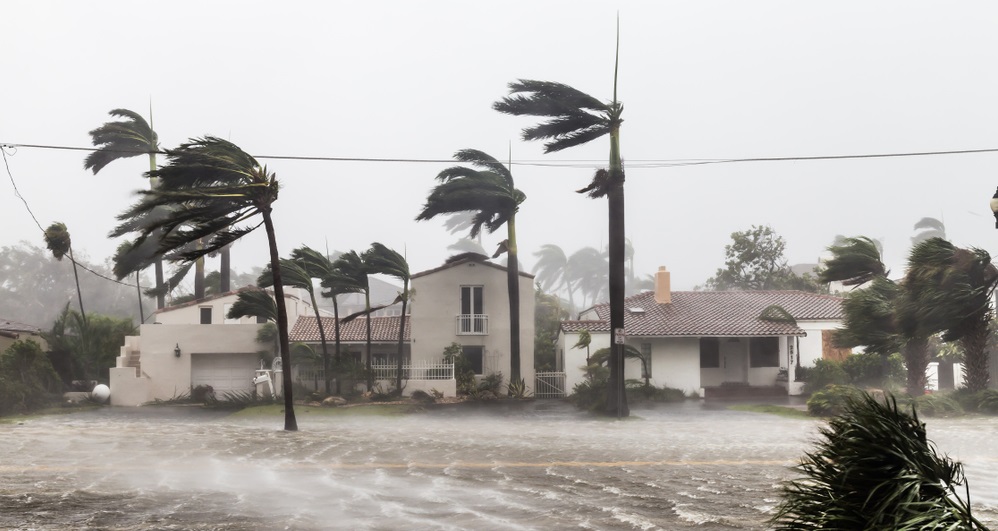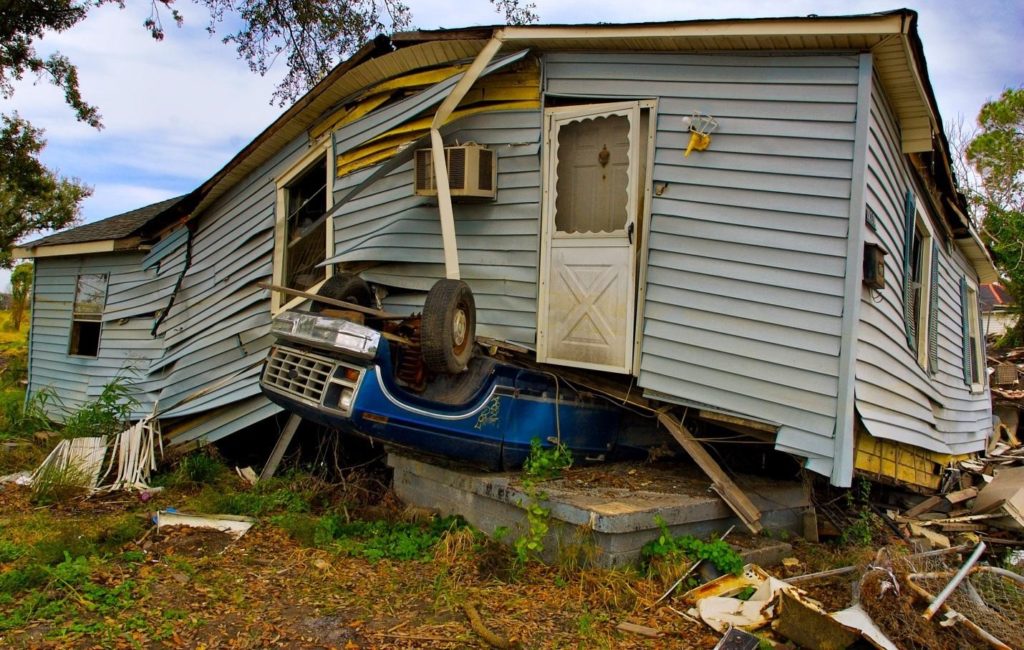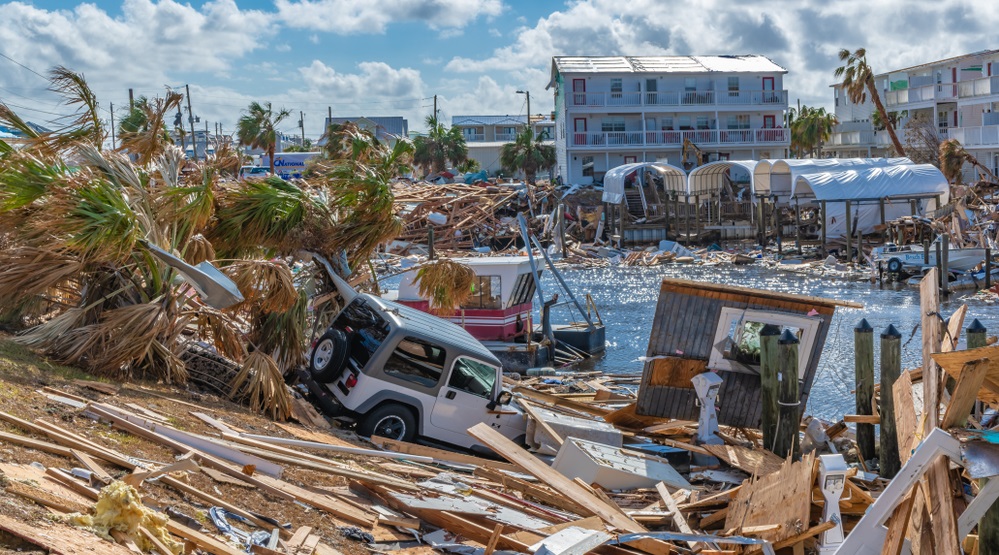
On August 26, 2021, the tropical depression observed on the Atlantic was upgraded to Tropical Storm Ida. The storm, which appeared to be headed northwest towards the Gulf Coast, was expected to intensify in the days that followed. The Houston National Weather Service predicted that it could turn into a Category 3 hurricane by the time it made landfall.
Texas has been hit by countless hurricanes over the last century. This article takes a look back at some of the worst hurricanes that have swept through the state.
When Is Hurricane Season in Texas
If your home is located in an area that’s considered a hurricane or tropical storm hotspot, you likely already know the importance of early preparation. In Texas, cities like Galveston, Houston, and areas near the Gulf Coast are often hit with strong winds, heavy rains, and storms, resulting in significant damage to property.
To adequately prepare for a hurricane, you first need to know when to start, which means knowing when hurricane season in Texas begins.
Hurricane season in the Lone Star state starts mid-to-late summer, extending to late fall. In other words, it runs from June to the end of November.
Based on past statistics, August is usually the most active month, with a total of 17 recorded hurricanes making landfall. There have only ever been three hurricanes that have hit the state in the month of October, but that is not to say it is impossible.
What Are the Categories of Hurricanes
The Saffir-Simpson Hurricane Wind Scale is used to measure the intensity of tropical storms. The scale runs from Category 1 to Category 5, with the latter being the most severe.
According to the Weather Channel website, Herbert Saffir and Robert Simpson first developed the scale in the 1970s. Saffir was a Miami-based engineer, while Simpson was a meteorologist and the then director of the National Hurricane Center.
While the scale has evolved over the last several decades, the version currently in use only measures severity based on the wind speeds a hurricane produces. Although a particular category designation may not tell you whether flooding or a tornado may accompany the hurricane in question, it can give you an indication of how strong it might be and what kind of threat it poses.
With that in mind, here’s an overview of the five main hurricane categories.
Category 1 Hurricane
Severity: Causes some damage
Wind speeds in a Category 1 hurricane range between 74 mph and 95 mph. There’s a very high chance of older mobile homes getting destroyed and falling debris striking people, pets, and livestock.
Frame apartments, homes, and shopping centers may experience some damage, and short-term power blackouts may occur resulting from broken power lines. However, windows made from protected glass can usually withstand this category of hurricanes without significant damage.
An example of a Category 1 storm that swept through southern Texas is Hurricane Dolly that made landfall in July 2008.
Category 2 Hurricane
Severity: Causes extensive damage
Wind speeds in a Category 2 hurricane range between 96 mph and 110 mph. Hurricanes with this designation pose a higher risk of death or injury to people, pets, and livestock due to flying debris. There’s a high chance of older mobile homes getting destroyed, although flying debris may also cause some damage to newer ones.
Frame apartments, homes, and shopping centers may experience significant damage to the roof and siding, and the strong winds may uproot entire trees. Category 2 hurricanes usually cause total power outages that may last anywhere from a couple of days to several weeks at a time.
Hurricane Frances is an example of a storm that was upgraded to Category 2 when it made landfall on the Florida coast in 2004.
Category 3 Hurricane
Severity: Causes devastating damage
Wind speeds in a Category 3 hurricane range between 111 mph and 129 mph. This class of hurricanes poses a high risk of death or injury to people, pets, and livestock due to falling and flying debris. Older mobile homes will almost always get destroyed, and newer ones will suffer a massive amount of damage.
Frame apartments, homes, shopping centers, and industrial buildings will experience significant damage, even if they’re well-built. Category 3 storms also uproot several trees that may fall on roads, walkways, driveways, and backyards. Residents will likely experience power blackouts lasting several days or weeks and water unavailability for a similar duration.
Hurricane Rita is an example of a Category 3 hurricane that hit the coast of Texas in 2005.
Category 4 Hurricane

Severity: Causes catastrophic damage
Wind speeds in a Category 4 hurricane range between 130 mph and 156 mph. At such high speeds, flying and falling debris poses a major risk of death or injury to people, pets, and livestock. Most mobile homes – older and newer ones alike – will be destroyed in the storm.
Well-built frame apartments, shopping centers, and industrial buildings will experience significant damage to their roofs and upper floors, and some frame homes may even collapse. Category 4 hurricanes usually blow out the windows on high-rise buildings, down power transmission lines, and uproot several trees. Residents will likely experience power outages and water unavailability for several weeks in the aftermath, making the area uninhabitable.
Hurricane Harvey is an example of a hurricane that was classified as Category 4 when it made landfall in Texas in August 2017.
Category 5 Hurricane
Severity: Causes near-total destruction
Category 5 hurricanes are the most catastrophic of all the storms we’ve explored so far. The wind speeds are usually upwards of 157 mph. These usually result in flying and falling debris that poses a significant risk of death and injury to people, pets, and livestock, both outdoors and indoors.
Mobile homes and the majority of frame homes will be destroyed in a storm of this magnitude, and building structures with roofs made of wood will be severely damaged. Metal buildings will also likely collapse, and nearly all windows on high-rise buildings will be blown out.
Category 5 hurricanes usually uproot trees on their path and destroy most power poles resulting in widespread power outages that will likely last several weeks. Residents of areas devastated by this category of hurricane should also expect long-term water unavailability.
Storms of this magnitude have never hit Texas. It is worth noting that only a handful of hurricanes have ever made landfall as Category 5 storms in US history. The most famous one in recent times was Hurricane Andrew in 1992. There have been a total of 37 Category 5 hurricanes in the Atlantic Ocean since 1924.
What Is the Most Dangerous Part of a Hurricane
While exceptionally high wind speeds can cause a significant amount of destruction to property, they’re not the most dangerous part of a storm. Roughly 50 percent of the lives lost during hurricanes can be attributed to storm surges.
Storm surge refers to the abnormal, unprecedented rise in the levels of water along the coast brought on by extreme hurricane winds. Low-lying areas experience significant flooding due to the displacement of water onto coastal land. The combination of storm surge and rough ocean waters leads to water damage and causes widespread structural destruction and mold infestation in the aftermath of the flooding.
Keep in mind that you don’t have to be living directly on the beachfront to be at risk of storm surges. The powerful sea currents can travel several miles inland, and water levels can reach staggering depths of 20+ feet.
What Is the Dirty Side of a Hurricane

You’ve probably heard meteorologists talk about the “dirty side” of the storm. But, what does this actually mean?
Simply put, it refers to the part of the storm that exhibits the most intense weather conditions compared to the rest of the hurricane. Say, for instance, you have a hurricane headed toward the Gulf Coast at a speed of 25 mph. Assume further that the sustained wind speeds blowing around the eye of the storm are at 100 mph.
Due to the Coriolis Effect, the hurricane flow of air in the Northern Hemisphere is counterclockwise. It means, therefore, that the wind blowing on the right side of the eye will be blowing the same direction in which the storm itself is moving. On the other hand, the wind on the left side of the eye will be blowing in the direction opposite to the hurricane’s movement.
As a result, the wind on the right side will essentially have a tailwind, meaning it blows harder at roughly 105 mph to 125 mph. The wind to the left side of the eye will be blowing against the direction of the hurricane at between 75 mph and 95 mph.
This explains why the right side of a hurricane making landfall, which is the side that experiences the strongest winds, is referred to as the dirty side. It is the side that’s responsible for storm surges since it pushes water inland from the ocean.
That is not to say that the left side doesn’t cause any problems. It’s just less destructive overall compared to the dirty side of a hurricane.
What to Do During a Hurricane
Below are some tips on how to stay safe during a hurricane.
- Close storm shutters and secure your home
- Disconnect propane tanks
- Don’t use your phone unless it’s an emergency
- Ensure you have a sufficient supply of water for sanitary use, such as flushing toilets
- If you can’t evacuate, stay in a wind-safe room, or take refuge in a small room, hallway, or closet on the lowest level of your home
- Keep your blinds closed, and don’t venture outside even if there’s a lull – you could be in the eye of the storm
- Listen to the local news stations for information and updates
- Moor your boat beforehand
- Secure outdoor objects or transfer them indoors
- Turn down the fridge thermostat to the coldest setting and switch off all utilities if advised to do so
What to Do After a Hurricane
Here’s what you should do after the storm passes.
- Listen to the local news stations for directives from your local government
- If you had evacuated, only return home when the authorities give the green light
- Inspect your home for water or structural damage
- If there’s a power outage, use flashlights as they are safer than candles.
The Deadliest Hurricanes in Texas History
Below is a list of the worst storms that have swept through Texas.
The Great Galveston Storm of 1900
This was not only the worst hurricane in Texas but was also labeled the deadliest in US history. Approximately 6,000 people lost their lives, and 10,000 others were rendered homeless. The 10-mile long, 17-foot high Galveston Seawall was built to offer residents protection against future hurricanes of that magnitude.
Hurricane Carla
This Category 4 hurricane hit Port O’Connor, TX, in 1961, leaving 35 people dead in its wake and destroying close to 2,000 homes in the area. Carla went on to spawn a tornado that hit Channelview, causing close to $200,000 worth of damages.
Hurricane Alicia
Alicia made landfall at Galveston, Texas, in 1983, before heading up the I-45 and killing 21 people in the process. The storm caused more than $1.7 billion in property damage.
Tropical Storm Allison
When Tropical Storm Allison hit Texas in 2001, a total of 23 people lost their lives, and an estimated 70,000 homes in the Houston area suffered significant damage. Authorities reported $5 billion worth of damages in the aftermath.
Hurricane Harvey
The 2017 Hurricane Harvey death toll was recorded at 103 people. The storm caused more than $125 billion in damages. Approximately 60 inches of rain was recorded in Nederland, TX, and 30 inches recorded in several parts of Houston.
Hurricane Rita
Christened the “The Forgotten Storm,” Rita made landfall on the South Texas coast less than a month after Hurricane Katrina had ravaged the Gulf Coast. Seven people died in the storm, and more than $10 billion in property losses were recorded.
Are you looking for new and exciting places to eat out in Texas? Check out our blog for the best new restaurants in Houston.

